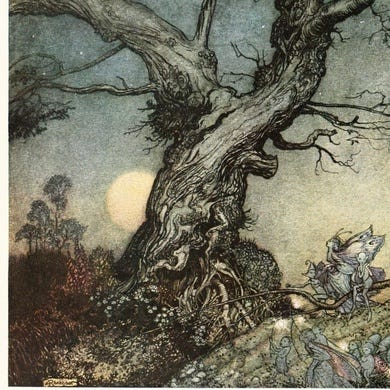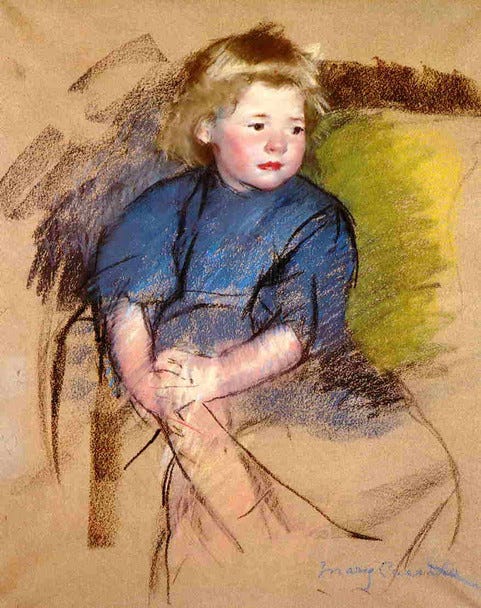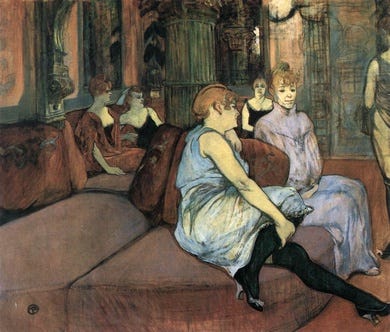Part of the idea behind this newsletter is to investigate my DNA as an artist. In the same way that advice to writers often comes down to “read everything” for artists it is look at everything. Over time you gather influences that shape you as an artist. Let me explain.
When you start out as an artist you start out by copying, consciously is best but it often happens unconsciously too. This is good because its a great way to learn. When you copy a Van Gogh or a Titian or a Rembrandt or a Lautrec, you learn something of how that artist saw the world and their fight to reproduce that vision. Over time though as you copy you begin to assimilate elements from many different artists, as you look at paintings you begin to assimilate what works for you. Then as you gather all these influences and take little bits from each, you sew them together into a patchwork quilt that in no way resembles those artists. This is you, the unique artist. Some will be more visible than others at times but they have become part of you.
My influences are many and most come from pre-internet days when finding out about an artist meant getting off your backside and visiting libraries and secondhand bookshops.
Arthur Rackham sits pretty close to the top if the list. One of the great illustrators of the late Victorian and Edwardian periods, he illustrated many of the classic children's books of the time from Peter Pan to Wind in The Willows along with many books of myth, legends and fairytales. I hunted down numerous books featuring his drawings and studied them in depth.
Dave McKee's Mr Benn was another great, though less obvious influence. There was, and remains, something simple yet complex about McKee's drawings that I still aspire to.
Mary Cassatt was an artist I discovered by accident. Browsing a second hand bookshop in my early twenties, I came across a slim booklet of her work and immediately fell in love with the everyday subject matter and her willingness to leave a piece unfinished. An amazing artist whose works still look at now.
For a time I became enamoured of pen and ink artists, largely due to this man. John Buscema was an American comic book artist who really hit his stride when he began drawing comics based on Conan the Barbarian for Marvel comics. He drew with a wonderful sweeping line that, once I started reading interviews with him, lead me down a rabbit hole filled with classic illustrators and newspaper cartoonists of the first half of the 20th century. He was the first person I wanted to draw like and the furthest from how my style developed.
When I was at college one of the requirements for my A Level was to do a study of an existing artist. I chose Toulouse Lautrec. I don’t remember why at the time but I do remember being swept up in both his artwork and his story. Again that almost illustrative quality of his paintings still draws me in now.
The two biggest influences on my landscapes, and this is a very high bar to set, are James McNeill Whistler’s Nocturne paintings
And J M W Turner's watercour landscapes.
I would love to achieve the sense of place that both create. Much has been written about Turner's clouds and they are amazing. Not something you could invent, you could only draw them from life. Whistler’s use of limited colour palettes in his nocturnes is, again, something I aspire to, and will continue to do so until the day I die.
Finally, because I cannot list every artist, Antonio Gaudi. Around the age of 13 I realised that many of my drawing lacked backgrounds and decided to do something about it. So as always I headed for the library. Looking for photos of buildings to practice with I came across the drawings of Anton Gaudi and found another rabbit hole to disappear down. Architectural drawings of the early 20th Century go from the very precise construction drawings to wonderfully atmospheric works designed to show how they will look and feel in reality. Gaudi was the first of many whose drawings I pored over.
Like his actual buildings there is not a straight line in sight.
Hope you’ve found this week interesting.
Until next time
Pete









I am blessed by your thoughts. there is so much we do not understand. It is a blessing when revelation starts to find a home in us.
There is more to art than meets the eye. Thanks Pete. Your approach is interesting.
I do not expect to become an artist, but I am intrigued by your insights and suspect that my own style of art will be a mixture of words and sketches. There is much about poetry and art that I do not understand, but am beginning to see God's hand in both writing and art. I still am nowhere near understanding a load of Jackson Pollocks, which seems to me to be a con - but I can see that deep meanings can be drawn out of simple images.